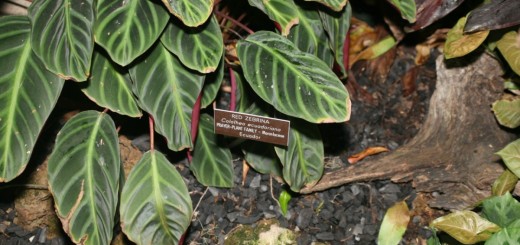New Growth of Plants in a Changing World
Climate change is affecting the world around you more than you may think. We all know that the world has been steadily increasing in temperature year by year. Depending on where you live you might have seen that Winter conditions are less intense, and that spring has been arriving sooner than usual. But have you ever stopped and wondered what this means for the environment around you?
As you may have noticed, numerous plants begin to reproductive growth during the spring. Plants that follow this cycle are known as “short-day” plants (Eichhorn & Evert, 2013). Plants, along with animals, are photo-periodical, meaning they respond to the changes of seasons by measuring the hours of daylight. Although the main driver for these responses is the daily amount of sunlight, higher or lower temperatures can either initiate or delay growths. To achieve maturity, it is necessary that conditions are stable enough to support the life of young plants. For short-day plants, the early onset of spring can be very deceiving.
The study of natural seasonal phenomena relating plants and climate, such as these, is known as phenology. A 2009 report by Sparks and Colleagues stated that the term phenology as seen an increase in use by more than seventy percent in last 3 decades (Beaubien and Hamann, 2011). This could indicate that the unusual change in global climate occurring recently has been drawing more scientists to study the changes in photoperiodic behavior. Raven, Eichhorn and Evert described that some plants can begin to bloom at a different amount of light hours if the temperature permits. The early onsets of spring and summer that we have been experiencing is explained by the fact that for many perennial plants, temperature exposure over a period of time is the main cause of spring development which includes leafout and budburst.(Beaubien and Hamann, 2011) An example of this occurrence is the blossom of many endangered flower species in the Glacial Heritage Preserve that came three weeks earlier than usual this year. For young plants, early stages of development such as this can be detrimental to its life.
Early spring is famous for being the time of year when new plants begin to develop. The steady rise in temperature along with longer hours of day and more direct sunlight creates ideal conditions for plant growth. Recently, the onset of spring has been occurring earlier in the year due to higher temperatures and lack of cloud coverage. It is also common for freezes to occur during spring, usually before most plant growth happens. The early spring growth that happens because of these abnormal temperatures becomes suspect to these cold snaps. An example of this was in 2007 when the Eastern United States experienced a very early arrival of spring and new plant growth, but after a freeze everything turned brown. “Because of the record warmth of March, however, in 2007 leaf-out started around day 85 and progressed rapidly until the freeze hit. The damage caused by the freeze was apparently sustained—canopy development was significantly below the average level by midsummer.” (Gu, 2008)
Beaubien, Elisabeth, and Hamann Andreas. “Spring Flowering Response to Climate Change between 1936 and 2006 in Alberta, Canada.” BioScience 61.7 (2011): 514-24. Web.
Evert, Ray Franklin, Susan E Eichhorn, and Peter H Raven. Raven Biology Of Plants. Print.


